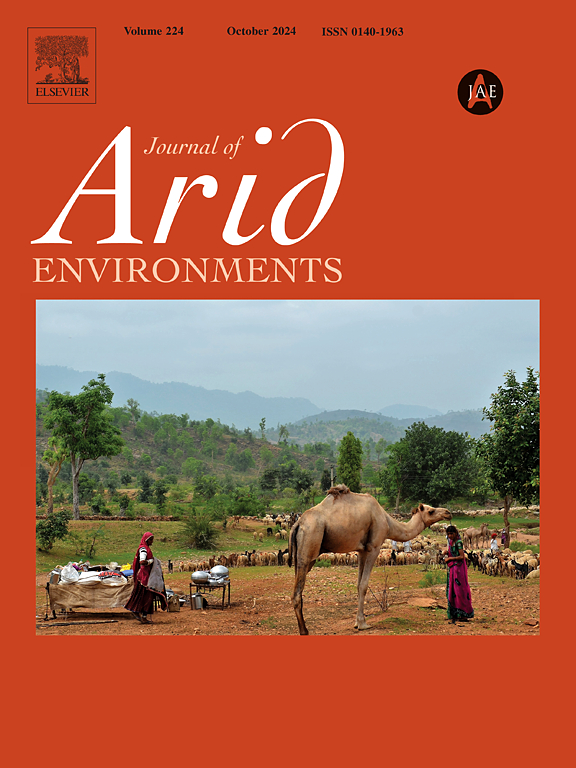Ecosystems managed for wildlife and livestock: Contrasting herbivore impacts in a heavily grazed African savanna
IF 2.6
3区 环境科学与生态学
Q2 ECOLOGY
引用次数: 0
Abstract
Replacement of diverse wild herbivore assemblages by livestock across expansive regions of African savanna grassland is predicted to modify tree-grass interactions. Yet, despite the ubiquity of this herbivore regime change, consequences of shifting from wildlife to livestock for savanna ecosystems are poorly resolved. We assessed the effects of livestock grazing on the herbaceous community of a nutrient rich, semi-arid savanna. Direct and indirect impacts - moderated via differences in tree cover - of intensive cattle grazing in communal rangelands, on the herbaceous community were contrasted with heavily utilized wild herbivore grazing systems. Communal rangelands showed a more than two-fold increase in woody cover compared to wildlife areas. Herbaceous differences between wildlife and livestock areas were driven primarily by changes in the area beneath trees, and differences in how densely wooded areas are used by wildlife and livestock. In wildlife systems, grazing intensity was much lower below than away from tree canopies, whereas in livestock systems grazing intensity was high irrespective of tree canopy presence. Away from trees, structure and functional traits of herbaceous vegetation were markedly similar between the two herbivory systems. In our study area, communal rangelands used by livestock, predominantly cattle, are not a degraded subset of wildlife areas but support near equivalent diversity, although with different grass and forb species, and warrants consideration when evaluating their contribution to biodiversity conservation in the region. Nonetheless, higher bare ground cover and the lack of tall-grass reserves mean that communally managed rangelands with low grazer diversity might be more sensitive to intra- and inter-annual climate variability since they are associated with lower forage variability.
为野生动物和牲畜管理的生态系统:重度放牧的非洲热带草原上食草动物的影响对比
在非洲广袤的热带稀树草原上,牲畜取代了多种野生食草动物,预计这将改变树与草之间的相互作用。然而,尽管这种食草动物系统的变化无处不在,但从野生动物到牲畜的转变对热带稀树草原生态系统的影响还没有得到很好的解决。我们评估了牲畜放牧对营养丰富的半干旱热带稀树草原草本群落的影响。通过树木覆盖率的差异缓和公社牧场密集放牧对草本群落的直接和间接影响,并将其与大量利用野生食草动物的放牧系统进行对比。与野生动物区相比,公有牧场的林木覆盖率增加了两倍多。野生动物区和牲畜区草本植物的差异主要是由树下面积的变化以及野生动物和牲畜对林木密集区的利用程度差异造成的。在野生动物系统中,树冠下的放牧强度远低于树冠外的放牧强度,而在牲畜系统中,无论是否有树冠,放牧强度都很高。在远离树木的地方,两种草食系统的草本植被结构和功能特征明显相似。在我们的研究区域,以牛为主的牲畜使用的公共牧场并不是野生生物区的退化子集,而是支持近乎同等的多样性,尽管草和草本植物的种类不同,在评估它们对该地区生物多样性保护的贡献时值得考虑。尽管如此,较高的裸露地面覆盖率和高草保护区的缺乏意味着,放牧多样性较低的社区管理牧场可能对年内和年际气候变异更加敏感,因为它们与较低的饲料变异有关。
本文章由计算机程序翻译,如有差异,请以英文原文为准。
求助全文
约1分钟内获得全文
求助全文
来源期刊

Journal of Arid Environments
环境科学-环境科学
CiteScore
5.70
自引率
3.70%
发文量
144
审稿时长
55 days
期刊介绍:
The Journal of Arid Environments is an international journal publishing original scientific and technical research articles on physical, biological and cultural aspects of arid, semi-arid, and desert environments. As a forum of multi-disciplinary and interdisciplinary dialogue it addresses research on all aspects of arid environments and their past, present and future use.
 求助内容:
求助内容: 应助结果提醒方式:
应助结果提醒方式:


